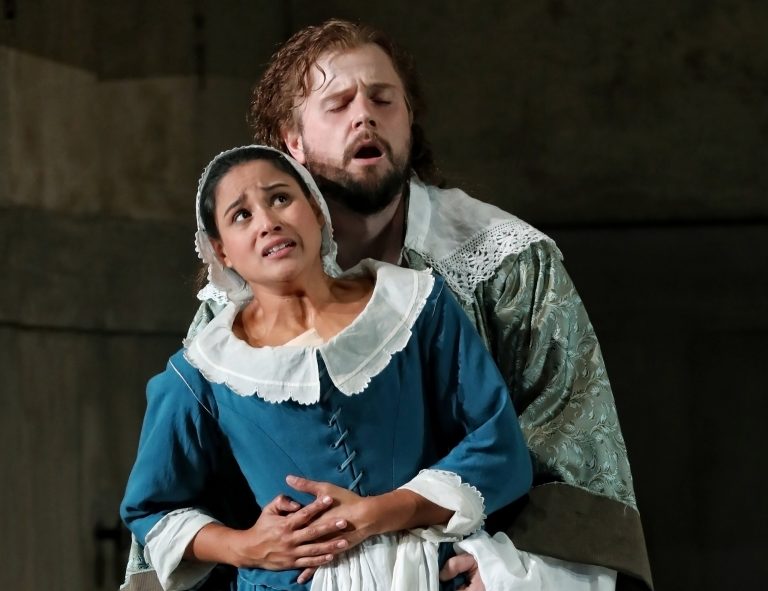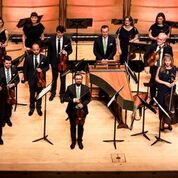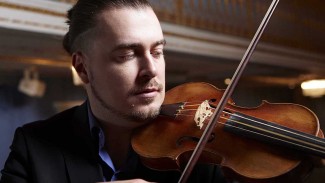‘Tosca’- A Welcome Revival For The Future

Opera Australia’s new production of Puccini’s Tosca was premiered on 6 July, just three years after they launched their previous new production. That 2010 production was widely regarded as a dramatic disaster – a travesty which completely reinvented the work so that it bore only a passing resemblance to the plot for which Puccini wrote the music. During the rehearsal period it also prompted the withdrawal of the respected soprano who was scheduled to sing the title role. Since Tosca is one of the cornerstones of the operatic repertoire, another new production was obviously needed – one that would be welcomed in future seasons.
Their choice of director fell on John Bell who has directed several opera productions previously, though this is his first for Opera Australia’s main stage. Bell’s drama productions are characterised by a lively inventiveness, while being grounded in common-sense, and his new production of Tosca displays the same qualities.
The time period has been shifted to Rome during the Second World War. Bell makes a good case for his choice since there are strong parallels between the terror inflicted in Rome following the overthrow of the brief Napoleonic Republic in 1798-99 and the Nazi occupation of the same city in 1943-4.
Bell draws on his experience in the drama theatre to ratchet up the tension at several key points, particularly at the end of each act. To cite just one instance among many, it is a masterstroke to have several of Scarpia’s underlings on stage for much of the first half of Act 2, where they can hear and see what he says and does – and completely accept it. A passing incident with his stenographer is chilling. These forcefully emphasise Scarpia’s total control and his complete disregard for what anyone knows or thinks about him.
Michael Scott-Mitchell’s sets graphically chart the descent from the first act’s romantic love affair of Tosca and Cavaradossi down to their deaths in act three. The set for the first act is a gorgeously realistic depiction of the church of Sant’Andrea della Valle which has been splendidly realised by the Opera Australia workshop. Visual interest is increased by placing the scene at an angle and including several stepped areas, all of which Nick Schlieper has lit very effectively. It is unfortunate that the logistic constraints of the theatre necessitate an interval of more than half an hour to remove this massive set and install Scarpia’s office for Act 2. This scene employs the bloated architecture favoured by twentieth century totalitarian regimes. It is dominated by two large swastika banners which immediately establish a threatening and oppressive mood. Act 3 is a stark modern prison, complete with prominent barbed wire. Tosca’s death in this setting is dramatically very convincing. Teresa Negroponte’s costumes do not draw attention to themselves, but successfully establish the war-time period.
Greek soprano Alexia Voulgaridou brings a good sense of drama to the title role – especially in the last two acts. She has an excellent spinto voice which is well-centred, with a warm, full tone. In the first act she tended to sing to the auditorium rather frequently which lessened her dramatic cohesion with the other protagonists.
Korean tenor Yonghoon Lee sings Cavaradossi. He looks good on stage and has a ringing, heroic tenor sound that he also uses sensitively. Dramatically, his interpretation seems well rehearsed rather than spontaneous and the relationship with Tosca misses its full potential.
John Wegner has had long experience in portraying Scarpia as a disgusting and repulsive creature and this new production adds to his list of successes. His interpretation exudes enormous menace combined with absolute power and the corruption that accompanies it. Vocally, he seemed tired on opening night and it is to be hoped that this will soon pass.
The smaller roles are all sung well. The Opera Australia Chorus and Children’s Chorus have an early night but they acquit themselves well in the Act 1 Te Deum.
The Australian Opera and Ballet Orchestra responded well to the conductor Christian Badea whose timing and fluid pacing enhanced the drama. Special mention should be made of the fine clarinet solo in the last act.
Opera Australia can be reassured that they now have a new and dramatically vital production which will be a welcome revival in future seasons. Performances continue until 31 August 2013.
Larry Turner for SoundsLikeSydney©
Larry Turner is a music writer who has been singing in choirs for many years, both in Sydney and London. He has written programme notes for Sydney Philharmonia, the Intervarsity Choral Festival and the Sydneian Bach Choir and is currently part of a team researching the history of Sydney Philharmonia for its forthcoming centenary.







